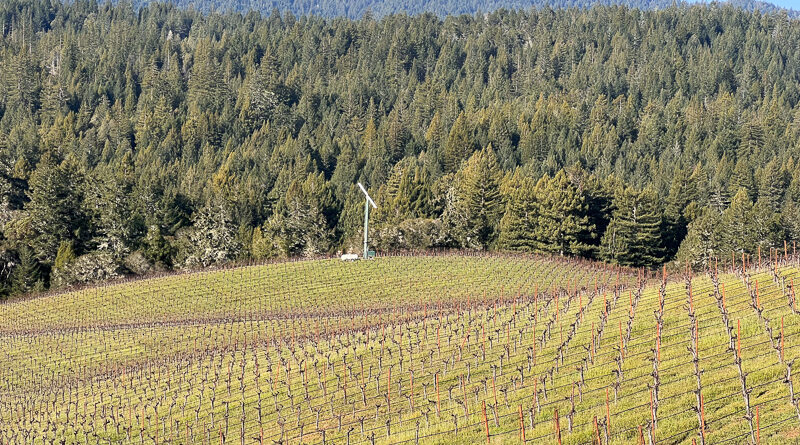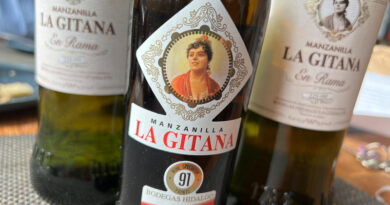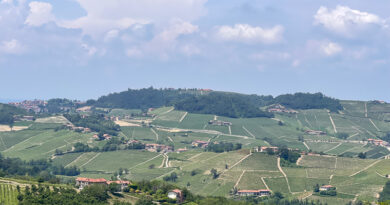Anderson Valley, California (1) where California meets the Pacific Northwest
One of California’s less well known wine regions, the Anderson Valley is rapidly developing a reputation as a rather special place for growing Pinot Noir, with Chardonnay also a strong performer. I visited for the first time in March, and came away impressed. It’s in an interesting area: the transition between California’s Mediterranean-style climate to the terrain of the Pacific Northwest.
‘We are on the border of the northwestern rainforest of the USA and what is called the Mediterranean climate of California,’ says Thom Elkjer, a long-time commentator on the region. ‘We are partly rainforest and partly maritime inland desert. Even when the temperatures are high there is a lot of moisture in the air, and when we are cold we are wet and cold. We have the widest diurnal range of any appellation in California.’
I drove from Santa Rosa in Sonoma early on a Saturday morning, and it’s quite a beautiful drive an hour north. Driving from San Francisco takes around three hours, and there’s a sense of remoteness as you get closer to the destination.
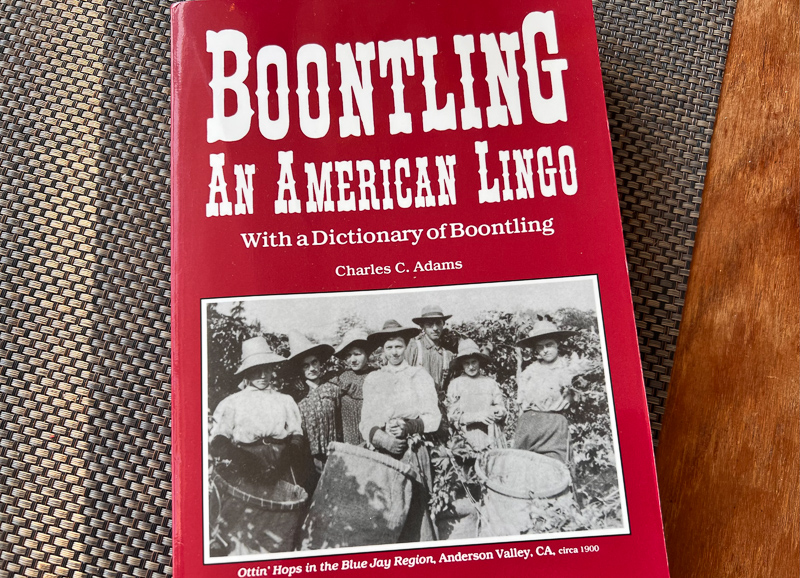
I arrived at 8 am in Boonville, the first town you come to when you hit the valley, and the largest (although this is just relative: it’s more like a village). The Anderson Valley is obviously a valley, and this is the widest part, with vineyards planted on the flat. It runs north and a little bit west, 15 miles long and about one mile wide, framed by the east and west ridges.
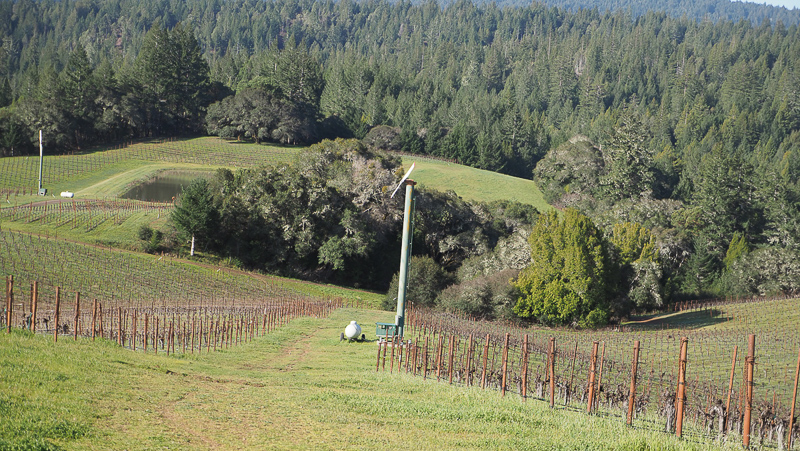
Some orientation. If you are heading in from Sonoma, then you enter the valley at Boonville. The centre is Poleeko (the name of Philo in Boontnig, which is the local dialect: yes, the Anderson Valley has its own language), and then the north is Navarro. This is one of the unincorporated areas of California with no city council. Lots of people moved up there to get away from things.
Past Navarro, suddenly the road veers more westerly and you end up leaving the valley and find yourself surrounded by large redwoods as you head to the coast. This is part of Mendocino county, and neighbouring the Anderson Valley is the Mendocino Ridge. Some winegrowers make wine from both AVAs.
Most vineyards are on either the valley floor, or on the east side. The west now has some vineyards, but these are cooler and more marginal. ‘The west side tends almost always to be cooler because of the proximity of the ocean,’ says Arnaud Weyrich of Roederer Estate. ‘You can feel the breeze: that comes from the ocean. In summer, it’s a cool breeze. Back in the 1980s it would have been a bad idea to have a vineyard on the west side because you would have problems ripening your fruit. This is northern California, and it is cool.’
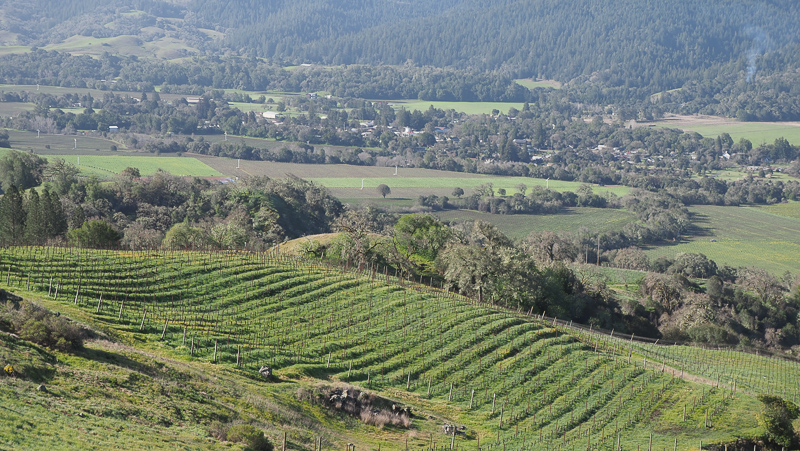
Fogs come into the valley too. ‘As the crow flies we are 11 miles from the sea here,’ says Arnaud. ‘The fog builds up on the coast and rolls into the valley, and usually burns up early morning. This used to be the defining feature of the Anderson Valley, but as fog becomes rarer (San Francisco has been measuring it and they have shown a 30% decrease of fog events in the bay area), there are days where we don’t have the fog at night or in the morning. But still, this is what creates the Anderson Valley type of grape balance. The days warm up, but the nights cool down, creating a diurnal shift of around 50 F as we get close to harvest. The fog works as a dampener on that shift, so the close you are to the coast the less of this you get. If you are further inland it can work up to 90 F in the day.’
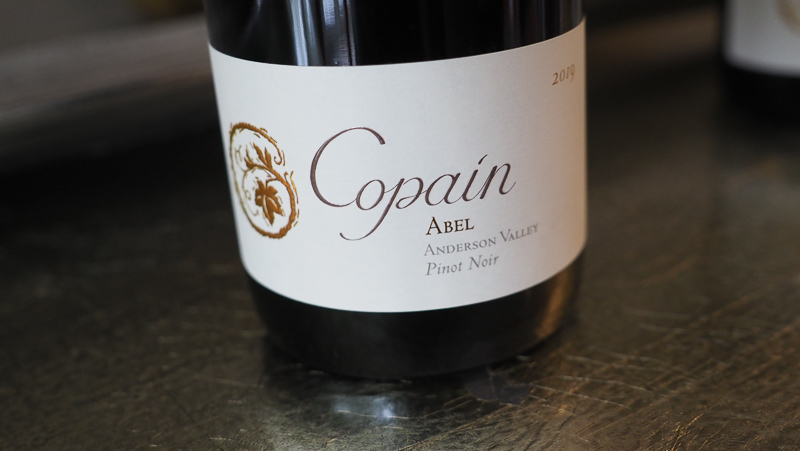
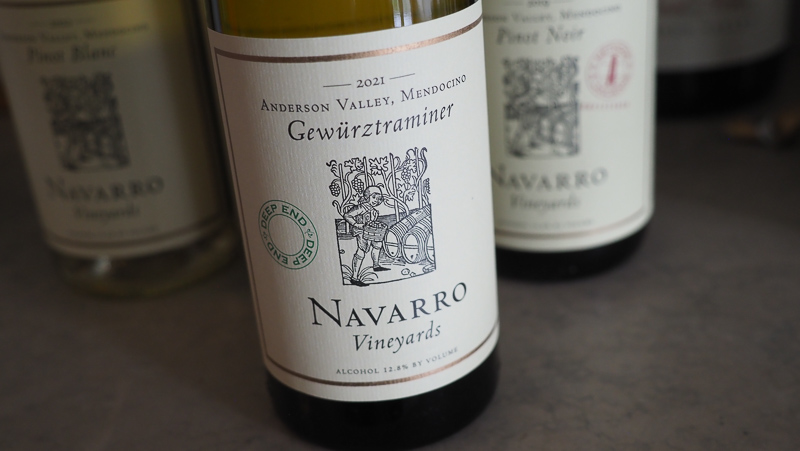
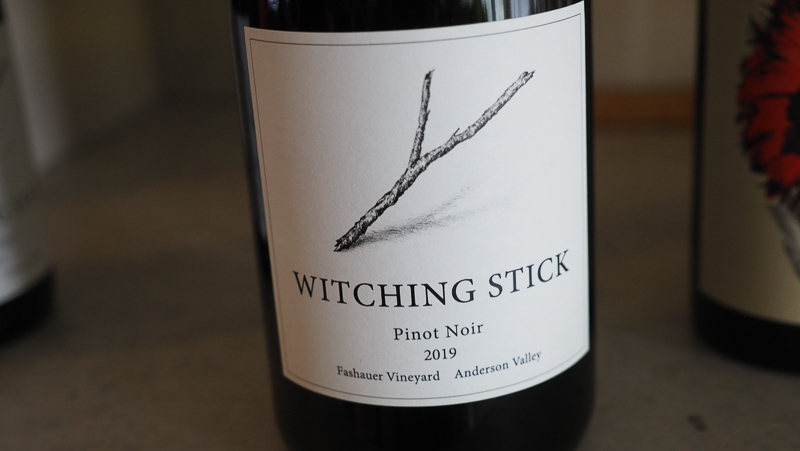
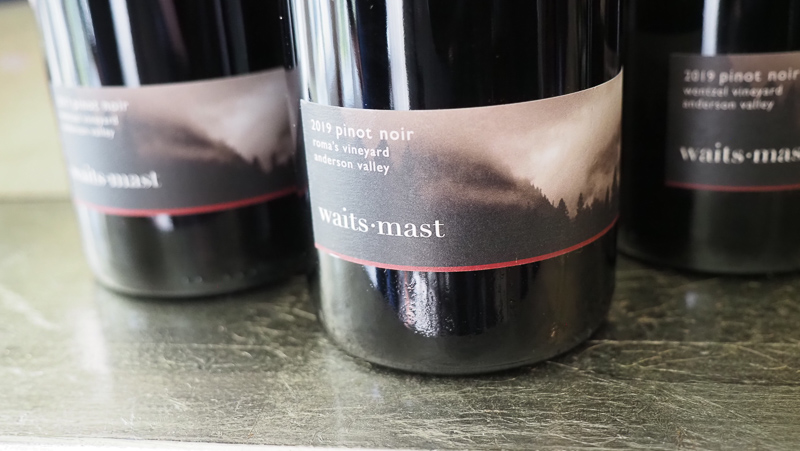
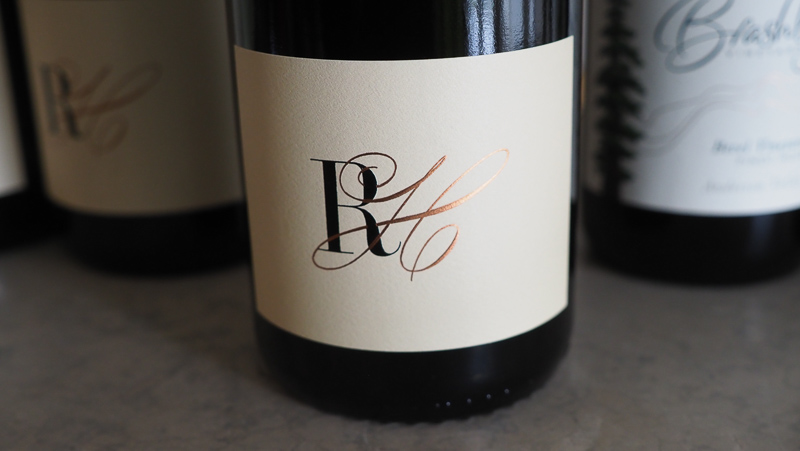
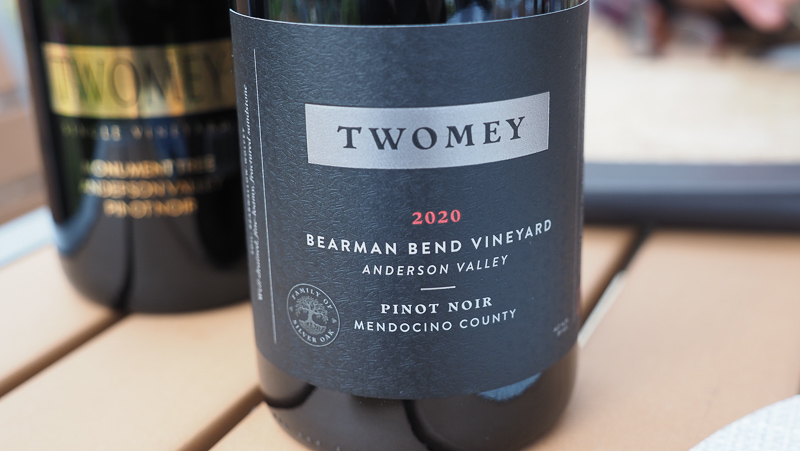
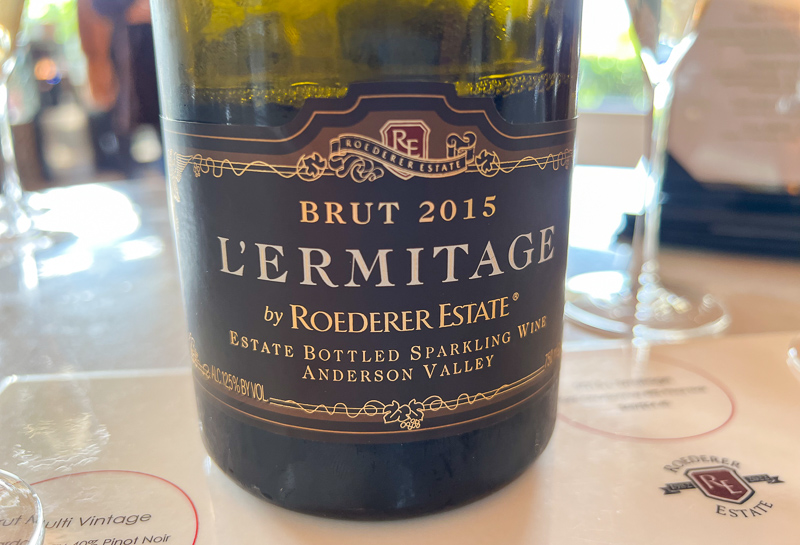
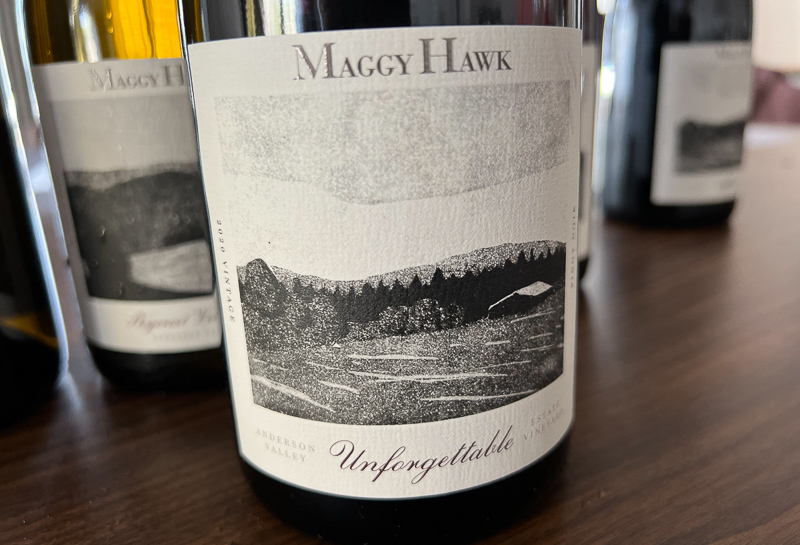
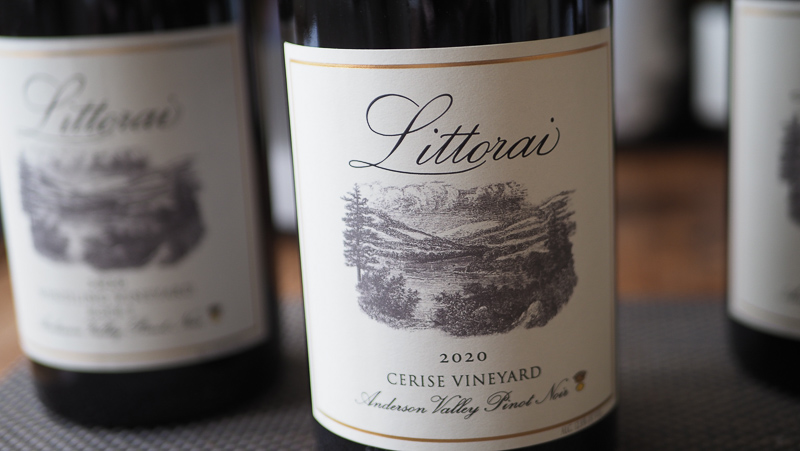
My first appointment was with Ted Lemon, who’s been making wine from here since 1992. He’s now a vineyard owner, too, and half of his wines come from the Anderson Valley, with the other half from Sonoma. ‘Within the valley, there are the older, more established vineyards, and then a trickle of much younger wineries such as Maggie Hawk and Jason Drew,’ says Lemon. ‘Then there are people like Radio Coteau, Peay, Williams Seylem, Failla. It’s mostly Pinot Noir and Chardonnay for bubbles. There are still some aromatic whites – there was a reputation for aromatic whites – it’s just selling them in the USA.’
Some perspective. When it achieved its AVA status in 1983, there were just 582 acres of vineyards planted, with seven wineries and 16 vineyards. But this is one of the California AVAs that makes sense from a wine perspective, established at a time when many AVAs were being recognized. ‘Some of the AVAs were bogus,’ says Thom Elkjer. ‘What happened here is that all the growers agreed on what the boundaries were, what the climatic areas were and what the varieties were, and defined an appellation that really has meaning.’ He adds, ‘it’s a place worth getting to know.’
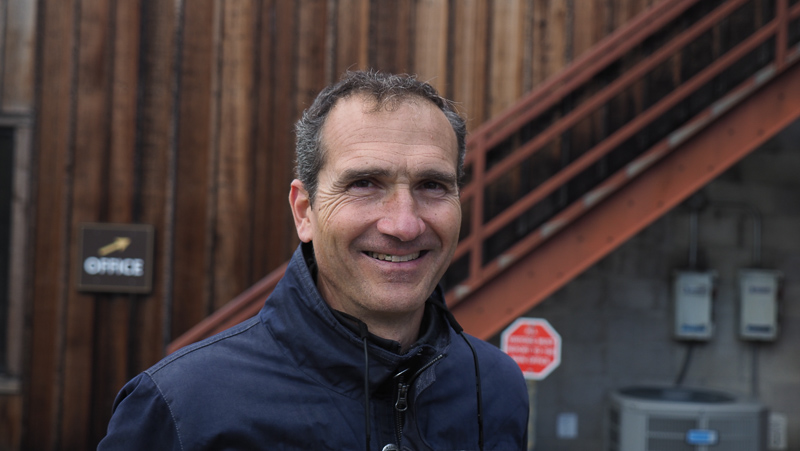
Arnaud Weyrich first came to the Anderson Valley in 1993, to work with Roederer Estate, who’d begun working here in 1982. He now heads up Roederer’s operations here. What was the Anderson Valley like back then? ‘There were already some vineyards planted here,’ says Arnaud. ‘Lazy Creek, Eadmedes, Husch, Handley Cellars and Navarro Vineyards. We were part of the second wave of vineyards in the valley.’ Now Roederer are the biggest vineyard holder in the valley. ‘We are the biggest, but at the same time we are still pretty small. Behind us is Jackson Family Wines, around 500 acres. Roederer Estates owns or farms 620 acres, but under three labels: Roederer Estate, Sharffenberger Cellars and Domaine Anderson (a still wine brand).’
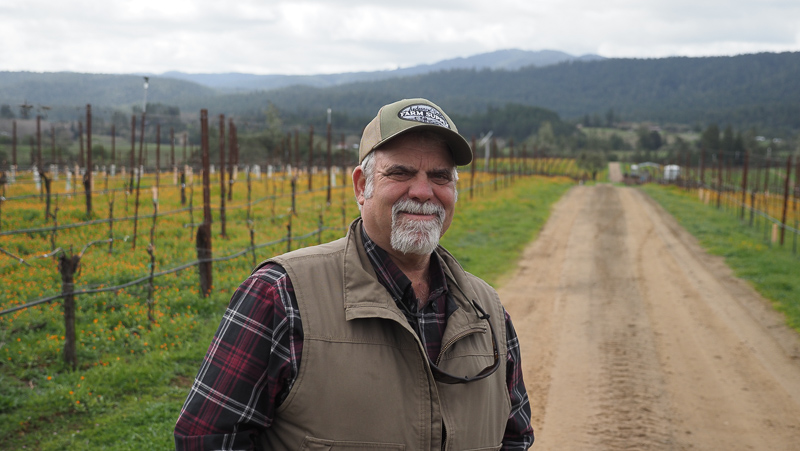
Paul Ardzrooni is a fourth-generation grape grower who has his own vineyard management company. I visited some of the vineyards with him. How long has he been running vineyards here? ‘Since January 1st 1990. I came up here after harvest 1989.’ Has it changed much since then? ‘A lot. For better or worse it has changed.’ What’s the talent of the Anderson Valley? ‘It does really well with Alsace varieties, but Pinot Noir is our main focus,’ says Ardzrooni. ‘When I came there was a lot of Gewurztraminer and a lot of Riesling. People experimented with Pinot Gris and it did really well. Then we grafted all the Riesling and Gewurztraminer that was on AxR1 to Pinot Noir, and then we pulled it all out and planted more Pinot.’
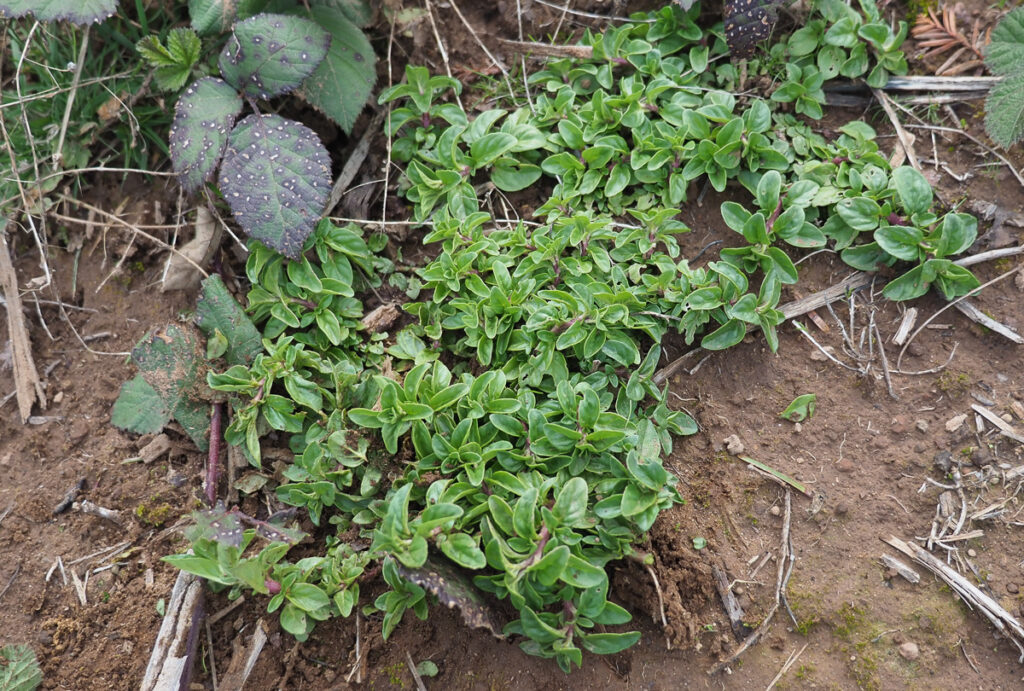
Back in 1983 the valley was 65% white and 35% red, with 27% Chardonnay, 20% Riesling, 18% Gewurztraminer and 8% Pinot Noir. Now it’s quite different with 69% Pinot Noir, 21% Chardonnay and the balance a range of varieties, with around 1000 hectares planted. Sparkling wine has become a star, largely thanks to Roederer Estate, who began making wine here in 1986. But sparkling began with Sharffenberger Cellars, who started in 1982. Other notable early wineries were Handley Cellars in 1983 and Navarro in 1984. These wineries promoted the appellation and brought in new winemakers.
Spring frost is a big risk, especially on the valley floor. ‘Sprinklers are what you want in the Anderson Valley because it can get down to 25 or 26 F for several hours,’ says Ted Lemon. ‘Now water is getting more scarce, so there are more propellors.’ The main reason is the shape of the valley. ‘It is not very deep, but it is not very wide, either,’ says Weyrich. ‘Cold air tends to sit. When the wind dies and you have nights that are clear, there is low humidity and so there’s high radiation of heat to the sky. Then fairly quickly an inversion layer creates itself. The valley floor tends to be prone to spring frost, way more than in Champagne. For us it is something every year: you have to build infrastructure in your vineyards to fight frost. We have ponds with water and sprinklers. Access to water in large quantities to do frost protection is important. We use about 70% of the water we store for frost protection. There is a finite number of nights of frost we can fight. This is the main issue for all the vineyards below 600 or 700 ft elevation.’
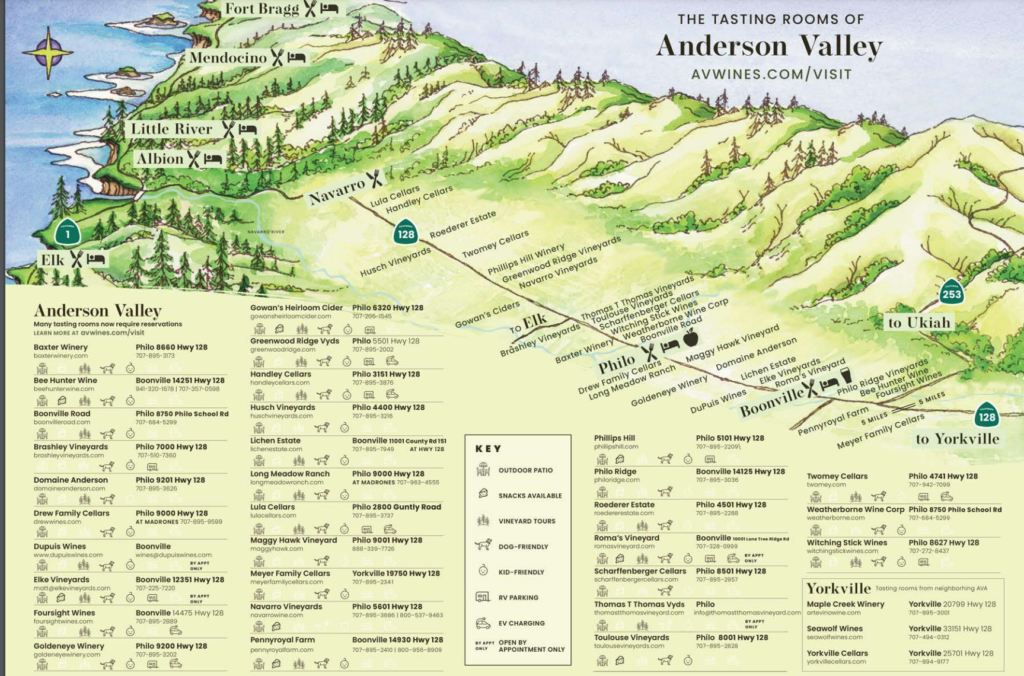
Back to the geography. The widest part of the valley is where you’d enter coming from Sonoma, at Boonville. This is the southeastern end of the valley, and the road that runs through it, 128, heads west and slightly north. The middle section is around the town of Philo, and then towards Navarro it’s the deep end, which is narrower and deeper.
In this series of articles, I’ll be exploring the Anderson Valley, profiling some of the top producers, and recommending many of the top wines.
ANDERSON VALLEY

